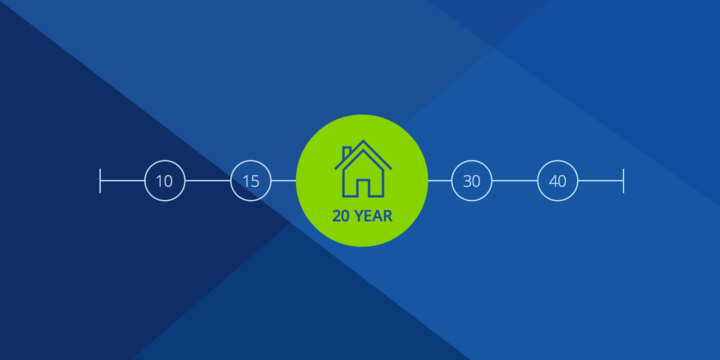What is the Qualified Mortgage Rule?
A Qualified Mortgage (QM) is a type of loan that has stable features defined by federal law to increase the probability you'll be able to afford it. Let's review how QM laws impact you.

Written by Chris Sessions on December 8, 2015
IN THIS ARTICLE:
- Qualified Mortgage Rule Definition
- Properties & Loan Types Covered
- Overview of the QM Rules
- Overview of ATR Rules
- Can You Get A Loan That Doesn't Meet QM Standards?
A Qualified Mortgage (QM) is a type of loan that has stable features defined by federal law to increase the probability you'll be able to afford it.
Additionally, federal ability to repay (ATR) law requires lenders to make a good-faith effort to determine that you have the ability to repay your mortgage before you take it out.
Let's review how QM and ATR laws impact you.
Properties & Loan Types Covered
In response to the 2008 financial crisis that was triggered by loose mortgage lending standards, the QM and ATR laws were adopted by the Federal Reserve and Congress, then ultimately taken over by the Consumer Financial Protection Bureau (CFPB), a new regulator formed in the wake of the crisis.
The CFPB's new ATR/QM laws took effect for home loan applications beginning January 10, 2014, and applies to loans on one- to four-unit homes, including condominiums and co-ops. The following loan types are excluded:
- Home equity lines of credit
- Time-share plans
- Reverse mortgages
- Temporary or bridge loans with terms of 12 months or less
- A construction phase of 12 months or less of a construction-to-permanent loan
- Consumer credit transactions secured by vacant land
Overview of the QM Rule
According to the Qualified Mortgage rule, the following risky loan features are not permitted on a QM:
- An “interest-only” feature, when you pay only loan interest each month without paying down the loan balance.
- Negative amortization, which allows you to pay less than the interest due each month so your loan balance can actually grow.
- Balloon payments, which require you to pay off the remaining balance of your loan a certain number of years into your loan.
- Loan terms that are longer than 30 years.
- A debt-to-income ratio higher than 43 percent, meaning the total of your monthly housing and non-housing obligations exceeds 43 percent of your income.
- Points and fees greater than three percent of your loan amount (for loan amounts less than $100,000, higher percentage thresholds are allowed).
If a lender can verify their loans don't have any of these features, those loans are considered QM loans.
Overview of ATR Rules
Assuming the loan is a QM, a lender must prove that they followed eight loan approval factors as noted below in order to comply with the ATR rule:
- Verify current or reasonably expected income or assets (other than the value of the subject property) that the consumer will rely on to repay the loan.
- Verify current employment status (if lender is using employment income when assessing the consumer’s ability to repay).
- Lenders must calculate the highest possible monthly mortgage payment for the loan using a fully amortized payment and the introductory or fully-indexed rate, whichever is higher.
- Include monthly payments on any simultaneous loans secured by the same property in qualifying calculations.
- Include monthly payments for homeowners insurance lenders require the consumer to buy, property taxes, and certain other costs related to the property, such as homeowners association dues or ground rent.
- Include debts, alimony, and child support obligations.
- Calculate monthly debt-to-income ratio or residual income using the total of all of mortgage and non-mortgage obligations listed above, as a ratio of gross monthly income.
- Verified credit history.
Lenders can consider additional factors, but to comply with ATR rules on QM loans, they must consider at least these eight factors, and if they do, they are given certain protections from legal claims by consumers. However, if you believe they didn't properly verify you had the ability to repay your loan, you can contact the CFPB to find out how you still may be able to challenge your lender.
Still have questions? Find a local lender who can help

Can You Get A Loan That Doesn't Meet QM Standards?
Some borrowers reading the QM standards might feel like they couldn't qualify for a loan because they have a debt-to-income ratio greater than 43 percent, or they actually want an interest-only loan.
It's still possible to get a loan in these scenarios, it just wouldn't be a QM. Lenders are allowed to make non-QM loans -- just know that, when doing so, they may apply their own approval standards that are stricter than the ATR standards above.
To evaluate your situation, you simply have to find a lender in your area who will analyze your profile and be able to advise on your options.
How much home can you afford?
At Zillow Home Loans, we can pre-qualify you in as little as 5 minutes, with no impact to your credit score.
Zillow Home Loans, NMLS # 10287. Equal Housing Lender
Get pre-qualifiedHow much home can you afford?
See what's in reach with low down payment options, no hidden fees and step-by-step guidance from us at
Zillow Home Loans.
Zillow Home Loans, NMLS # 10287. Equal Housing Lender
Calculate your BuyAbility℠
Related Articles
Get a mortgage with Zillow Home Loans
Go from dreaming to owning with low down payment options, competitive rates and no hidden fees. A dedicated loan officer will guide you until you have your keys in hand.

Zillow Home Loans, NMLS #10287. Equal Housing Lender.



